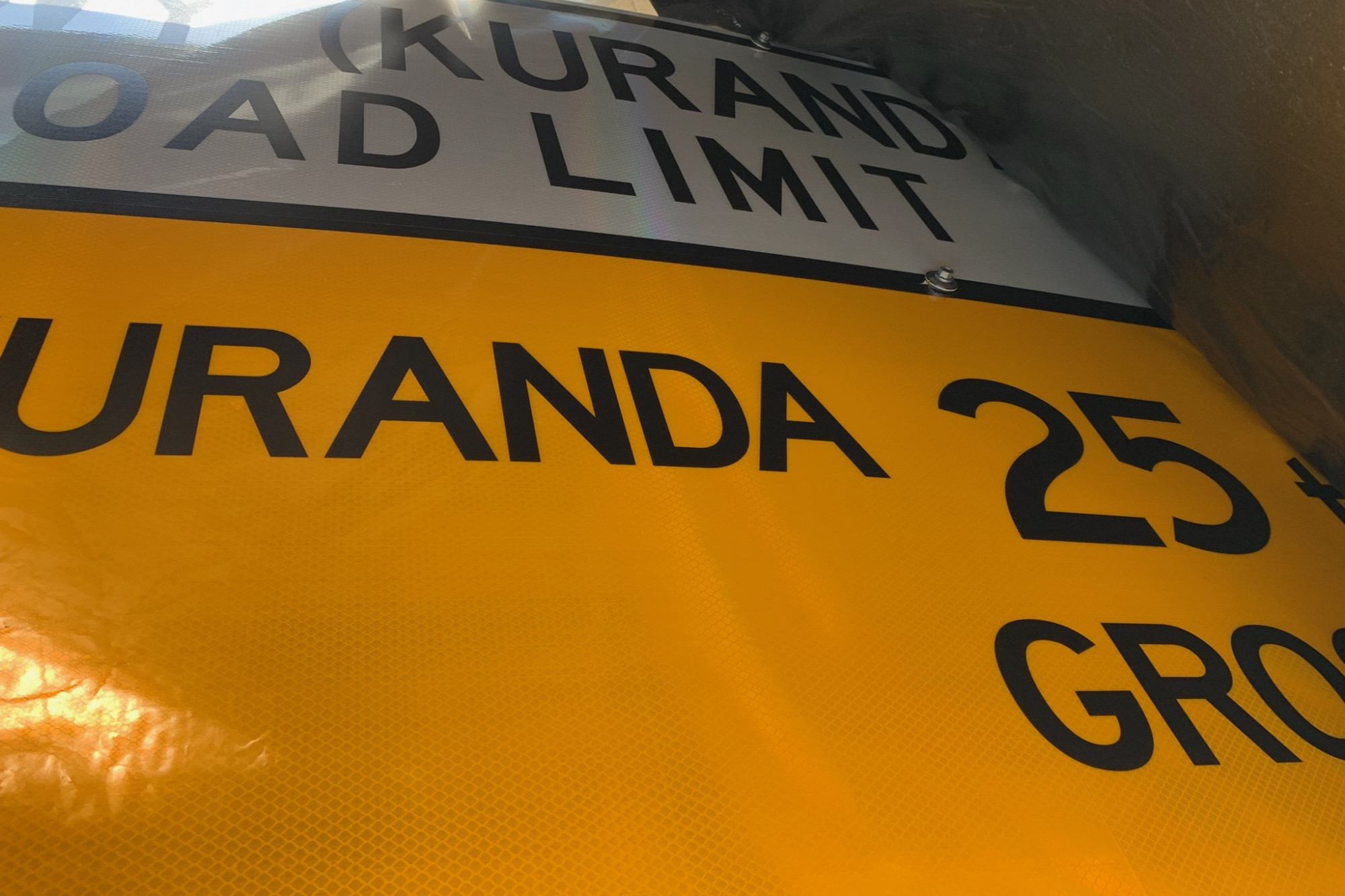
That Bridge – as it was referred to by NQEA’s Chief Draftsman, Ken Carncross, near caused the collapse of NQEA in 1961 which was the year construction began on the high level bridge over the Barron River at Kuranda (near Cairns).
In 1961, the Queensland newspaper of the day “The Truth” wrote under the heading: “Steel goes joy riding around Queensland”.
Don Fry AO, one of Australia’s named top engineers recalls the history involving NQEA with the construction of the Bridge.
In 1961, RG (Dick) Fry CBE (founder of NQEA), is alerted to the news of the Brisbane based company, Evans Deakin, having been privately awarded a contract to provide the steel girders for the new high level Barron Bridge.
On discovering no formal tender process was entered into by Main Roads Department (Queensland Government), Dick Fry pressed the Government to call public tenders.
By this time, the steel for the bridge ordered by Main Roads, had already been delivered to Evans Deakin in Brisbane.
Main Roads was ordered to call tenders for the fabrication of the steel girders and complied with tender submissions requested within two weeks.
(Normally a project like this would require a tender period of two months.) My father received the tender package and we spent the next 10 days working out a price which was submitted within the time frame.
NQEA was subsequently awarded the contract. All the steel was then removed from Evans Deakin’s facility and relocated to Cairns.
At the time, NQEA had just completed the construction of the 10 foot diameter inverted syphon ducts for the Tinaroo irrigation system involving hundreds of tonnes of fabricated steel to 100% x-ray weld quality and as such was completely capable to take on the contract.
Work commenced in the second half of 1961. The Main Roads Department then began their revenge invoking a ridiculous inspection procedure.
Firstly, they insisted all the BHP supplied steel be rolled to a flatter tolerance than supplied (not originally a specified task).
We surprised their inspectors by using our own designed and built plate rollers used for the previous Tinaroo project. Then came the marking out in readiness for cutting.
I can now refer to my diary notes dated 10 November 1961. Diary: Remarked the Type 4 girder web plate – commenced 6.15 am and requested the Main Roads Inspector, Mr. I. Francis, to check at 12 am.
He found a slight discrepancy (1/64 of an inch error in 60 feet). Mr. Francis put a hold on cutting and left the site. He returned at 4.45 pm in company with another Main Roads Inspector, Mr. Mathers.
They jointly gave the go ahead to cut just as the work force was finishing work for the day.Page 2 of 2 The welding inspection required samples be made and sent to Evans Deakin for xray analysis. All samples were failed.
We subsequently retrieved some samples and arranged independent testing. They were found to be 100% sound. This type of aggressive inspection persisted for weeks.
My diary notes a type 2B girder was finally built and made ready for delivery. It was clear the Main Roads had the upper hand not only by causing delays but by withholding payment causing NQEA to relinquish the contract.
The steel was then sent back to Evans Deakin’s Brisbane facility for completion. The story now gets worse.
During the erection period of the steel girders, much of the Evans Deakin welding was found to be deficient and required gouging and rewelding in situ.
I am aware the only girder built by NQEA was found to be 100% sound and did not require any rectification. The Bridge fiasco took its toll on NQEA which caused financial collapse.
The company was only saved by the Headrick family of Cairns and in particular, Bill Headrick, who offered my father 6 months credit on steel and other items purchased from the Headrick company.
An obligation which was fulfilled. About 6-10 years ago, I drove over the Bridge and decided to turn around and look under the Bridge. I was surprised to find a number of post stressed longitudinal bars reinforcing the bottom chord of many girders.
I noticed some of these bars were vibrating excessively responding to Bridge traffic. Some of the bars seemed to be loose.
Knowing the Bridge strength depends on maintaining shear bonding between the concrete road path and the steel girders, and as I did not recall the tension bars being in the original design, I made contact with the Main Roads Department in Cairns and suggested the integrity of the Bridge was suspect and should be inspected immediately.
Some weeks later, I received a call to advise the Bridge had recently been inspected and all was okay. I regret not pursuing the matter.


